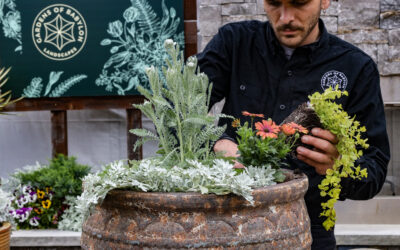
1. Increased sunlight
Good or bad, outdoor plants receive more direct sunlight compared to indoor plants. Sunlight is essential for photosynthesis, the process by which plants convert light energy into chemical energy, allowing them to grow and thrive. Placing your houseplants outside exposes them to natural sunlight, which can enhance their growth and promote healthier foliage. However, keep in mind that not all plants need or can handle full sunshine. For example, most cactus varieties need and enjoy full sun all day, but many philodendron varieties will burn their leaves if left in the sun for too long. Do your research!

2. Natural air circulation
In indoor settings, air circulation tends to be limited, resulting in the accumulation of dust, pollutants, and stagnant air. By relocating plants outside, they can benefit from natural air movement, which prevents the buildup of harmful substances and promotes fresher air, creating an environment conducive to optimal growth. Enhanced air circulation facilitates improved transpiration and nutrient absorption in plants, further contributing to their overall well-being.

3. Temperature and humidity benefits
Outdoor conditions generally provide a wider range of temperature and humidity levels than indoor environments. Exposing your houseplants to these natural fluctuations can stimulate their growth and encourage stronger root development – just like their natural environment. Additionally, increased humidity outdoors can be beneficial for plants that thrive in a humid environment. Philodendrons, Anthuriums, and most other tropical plants absolutely love high humidity, and may even grow out of control with all the extra moisture! Keep an eye out for mildew if your plants are getting too wet, and again – do your research. Not all plants need 60% humidity or more. A good rule of thumb is that plants with thicker leaves – like succulents – need less humidity to thrive.

4. Pest control
Many common houseplant pests, such as spider mites, aphids, and mealybugs, thrive indoors and outdoors. Though there are beneficial insects outdoors – like ladybugs – that can control pests, it’s important to know that pests can still be an issue. You will want to have a pest management regiment in place if you plan to have houseplants outdoors. Using neem oil is a great way to combat any pest issues. The best part about neem oil is that it does not harm the plant in any way when used in the correct way. Here is our blog on common houseplant pests, and how to get rid of them.

5. Larger growth
When deciding to move your houseplants outdoors, be prepared for remarkable growth! If your plants are already thriving, being in an outdoor environment will further enhance their well-being. Anticipate rapid growth, larger leaves, and stronger root systems. However, as the cooler months approach, it will be necessary to bring your houseplants back inside, and some of them might have grown significantly. Be ready to do some pruning if space becomes an issue due to their newfound size.
As we mentioned earlier, please keep in mind that not all houseplants can tolerate outdoor conditions. Some plants may be sensitive to direct sunlight, temperature extremes, or specific weather conditions. Before moving your houseplants outside, research their specific needs and consider factors like plant species, sunlight requirements, and local climate conditions to ensure they will thrive outdoors.






0 Comments